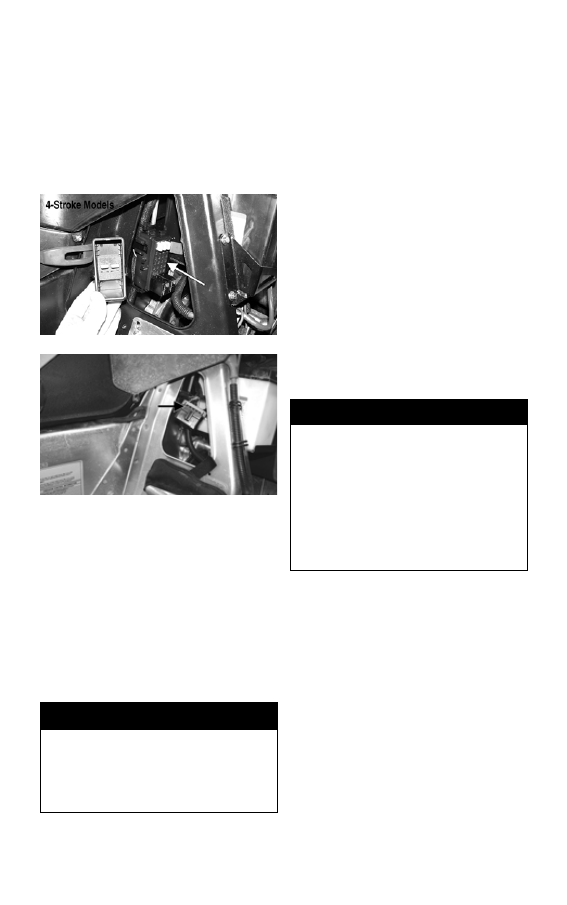Snowmobile Arctic Cat (2009 year). Manual - part 15

MAINTENANCE
53
Once which fuse to check has been
determined, perform the following
steps:
1. Open the right-side access panel;
then on 4-stroke models, remove
the fuse panel cover (the fuse
panel is located behind the bat-
tery). On 2-stroke models, discon-
nect the fuse connector harness.
ZJ005A
ZJ306A
NOTE: On 4-stroke models, there
are spare fuses inside the fuse
panel.
2. Remove the suspected fuse.
3. Look through the clear side of the
fuse to see if the metal wire inside
is separated. If it is, the fuse is
blown and should be replaced with
a fuse of the correct amperage rat-
ing.
4. Install the fuse panel cover.
Even after replacing a fuse, it may con-
tinue to blow if the cause of the over-
load is not determined. If the fuse
continues to blow, take the snowmobile
to an authorized Arctic Cat Snowmo-
bile dealer for service. If not under
warranty, this service is at the discre-
tion and expense of the snowmobile
owner.
HYDRAULIC BRAKE
SYSTEM
Arctic Cat recommends that the brake
system (brake lever, fluid reservoir,
hose, caliper, pads, and brake disc) be
checked daily for fluid leakage, wear,
or damage and for proper operation.
Also, the brake fluid level must be
checked every time before starting the
engine. The brake fluid must be visible
in the sight glass.
Checking/Adding
Brake Fluid
1. With sight glass reservoir in a
level position, check the fluid
level. The brake fluid level must
be visible in the sight glass.
NOTE: If the sight glass appears
dark, there is a sufficient amount
of fluid in the reservoir.
! WARNING
Always replace a fuse with one
having the same specified amper-
age rating. Using a fuse with a
higher rating can cause severe
wire damage and could start a fire.
! WARNING
DO NOT operate the snowmobile
when the brake lever lock is
engaged or when any component
in the brake system is damaged,
worn, or adjusted improperly. If the
snowmobile is operated and the
brake system is not functioning
properly, severe personal injury
could result.